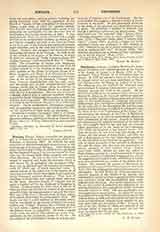

Fontana, FELICE, Italian naturalist and physiologist, b. at Pomarolo in the Tyrol, April 15, 1730; d. at Florence, January 11, 1805. He received his early education at Roveredo and spent several years at the Universities of Padua and Bologna. After filling the chair of philosophy at Pisa, to which he was appointed by the Emperor Francis I, he was summoned to Florence by the Grand-Duke Peter Leopold and made court physician. He was at the same time commissioned to organize and equip the museum, which is well known for its geological and zoological collections and its physical and astronomical instruments, some of which are of much historical value. A special feature of the collections is the unique set of anatomical models which were made of colored wax under Fontana’s personal direction. They were of excellent w ianshig and excited much attention at the time. Emperor Joseph II engaged him to make a similar set for the Academy of Surgeons in Vienna. Fontana spent the latter part of his life in Florence where his position as curator of the museum gained for him the acquaintance of most of the scientific men of the time. Though never in Holy orders, he is said to have worn the ecclesiastical dress. His death was due to a fall received on the public street, and he was buried in the church of Santa Croce near Galileo and Viviani. Fontana was a follower of Haller and wrote a series of letters in confirmation of the latter’s views on irritability. He made a special study of the eye and in 1765 carried on a series of experiments on the contractile power of the iris. He investigated the physiological action of poisons, partitularly of serpents and of the laurel berry. He discovered that the staggers, a disease of sheep, is due to hydatids in the brain. He also gave much attention to the study of the physical and chemical properties of gases. He published a number of memoirs and though a laborious writer was not always exact. His chief works are “De’ moti dell’ iride” (Lucca, 1765); “Ricerche filosofiche sopra la fisica animale” (Florence, 1775); “Ricerche fisiche sopra ‘1 veneno della vipera” (Lucca, 1767), of which a larger and much extended edition was published in two volumes in 1781; “Descrizioni ed usi di alcuni stromenti per misurar la salubrity dell’ aria” (Florence, 1774); “Recherches physiques sur la nature de fair dephlogistique et de fair nitreux” (Paris, 1776).
HENRY M. BROCK

